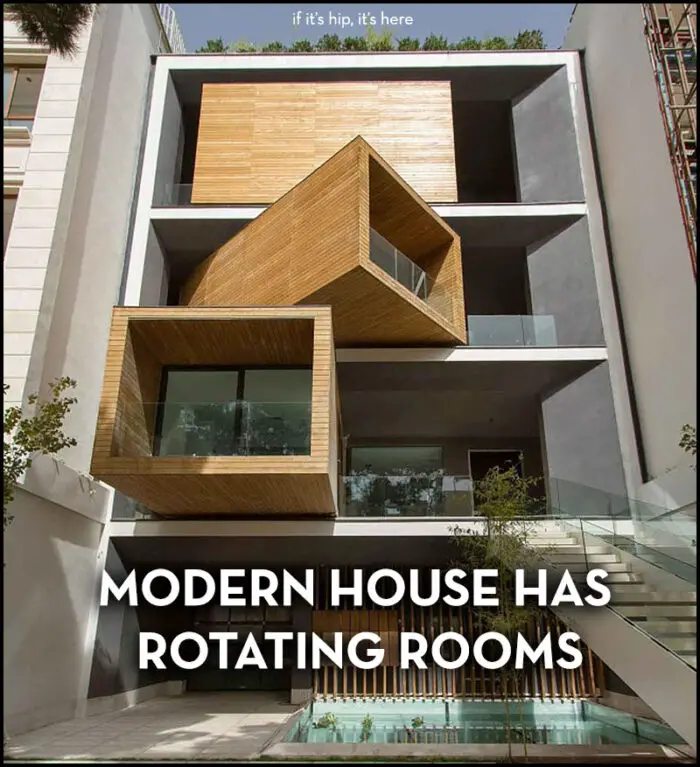The Sharifi-Ha House by Next Office is an unusual modern residential home in Tehran that is a serious feat of engineering. It plays with space, light and movement due to its unique architecture. It has boxed rooms that are engineered to rotate, keeping the house cool or warm and providing additional space, depending upon your needs. But that’s not all, the home has 5 above ground levels and 2 below ground, with an indoor pool at the basement level. All lit from overhead by the home’s open interior atrium.
Sharifi-Ha House by Next Office
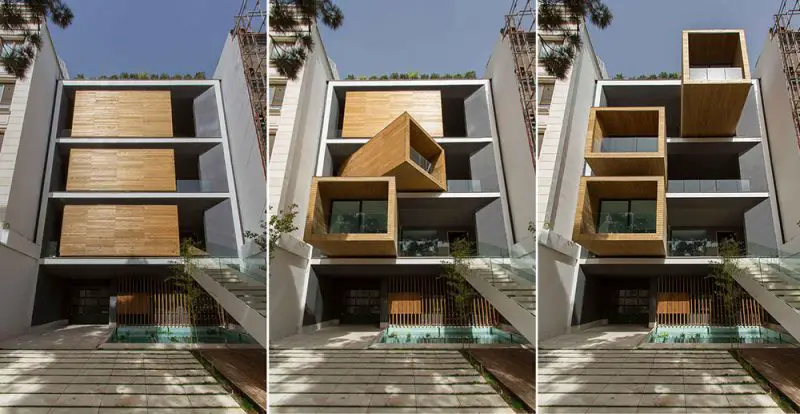
The home’s flat front exterior transforms to three dimensions as the mobile boxes rotate or turn, extruding from the facade and providing additional exterior space. At the same time, the interior space and light are affected.
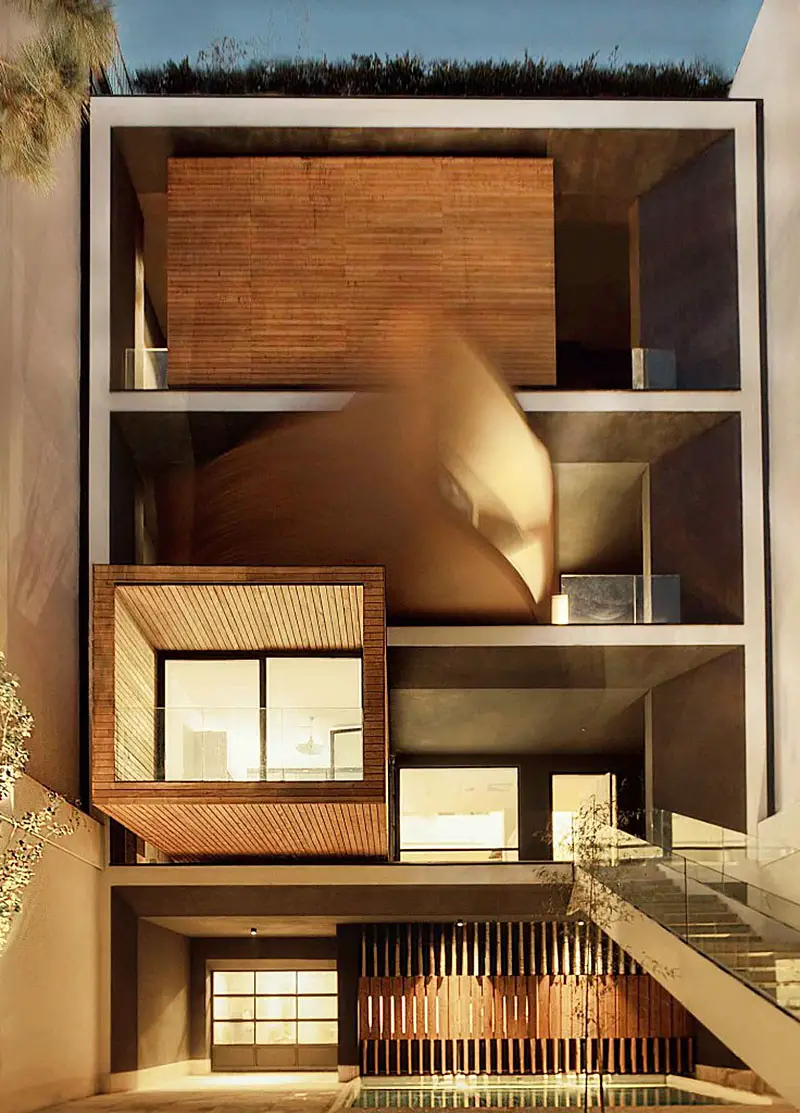
In addition to the innovative structural design, the seven story home combines fitness and wellness areas with an indoor pool at the basement level. By installing a glass fountain above the basement, daylight enters the room reflecting the light from the water into the space below.
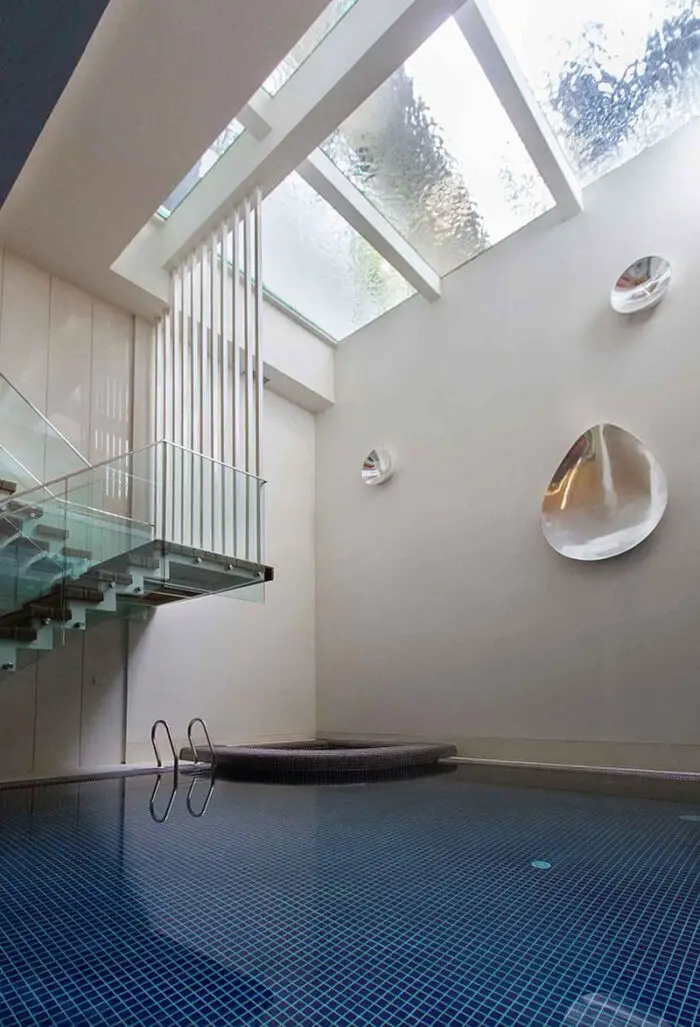
Watch the video below and then read on to hear from the architect and see lots of photos of the exterior, interior and plans for this unusual home.
(following text courtesy of the architect)
Uncertainty and flexibility lie at the heart of the designs concept in Sharifi-ha House. The sensational, spatial qualities of the interiors, as well as the formal configuration of its exterior, directly respond to the displacement of turning boxes that lead the building volume to become open or closed, obtaining introverted or extroverted character. These changes may occur according to changing seasons or functional scenarios of floor plans.
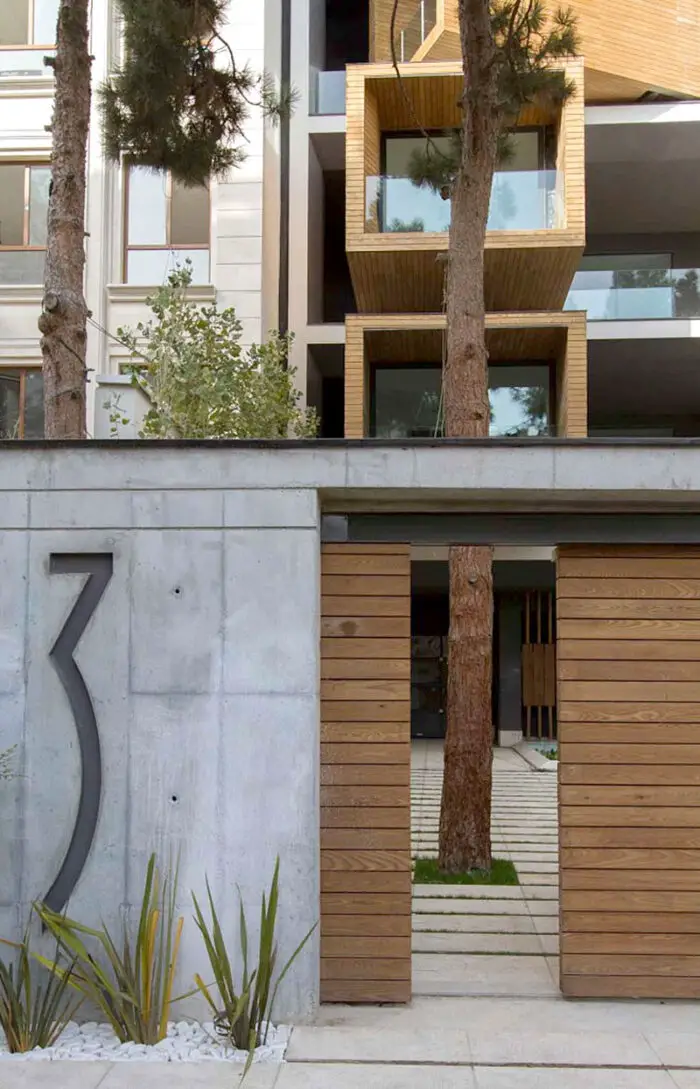
Like many other urban plots, the land for this project had a noticeably narrow facade-width compared with its length. Consequently, our expertise in transforming a two-dimensional facade to a three-dimensional one became indispensable.
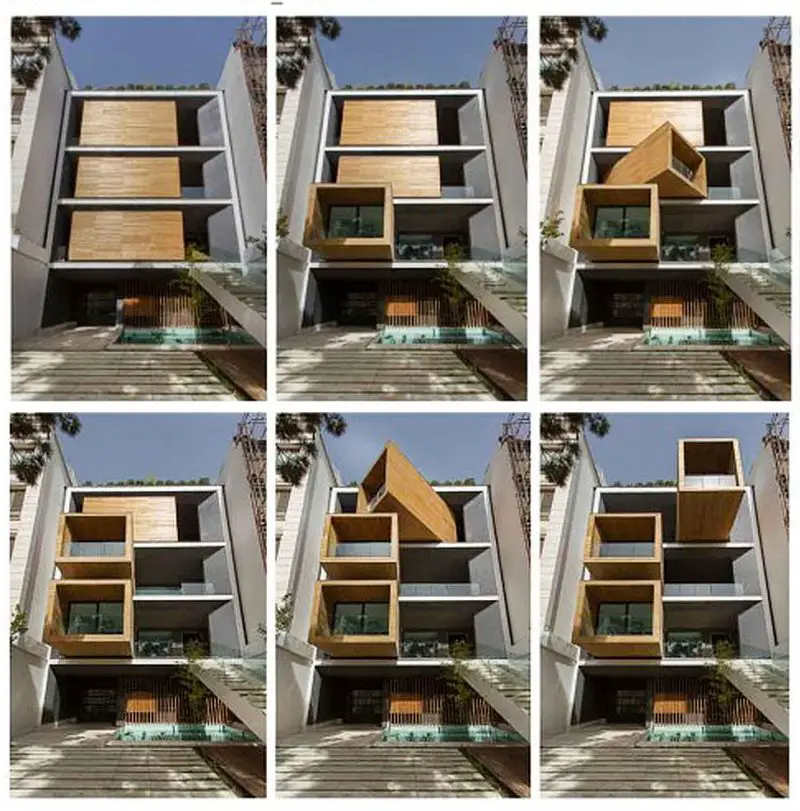
Here, the openness /closure of the building volume is a reference to traditional Iranian houses, which would dynamically serve as seasonal modes of habitation by offering both a Zemestan-Neshin (winter living room) and Taabestan-Neshin (summer living room) to their residents.

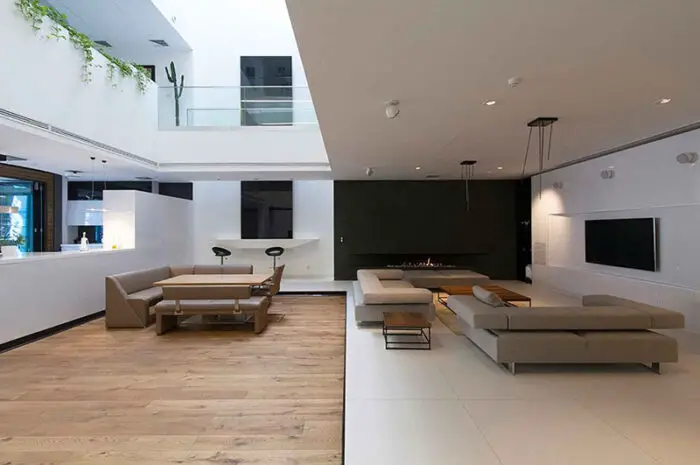
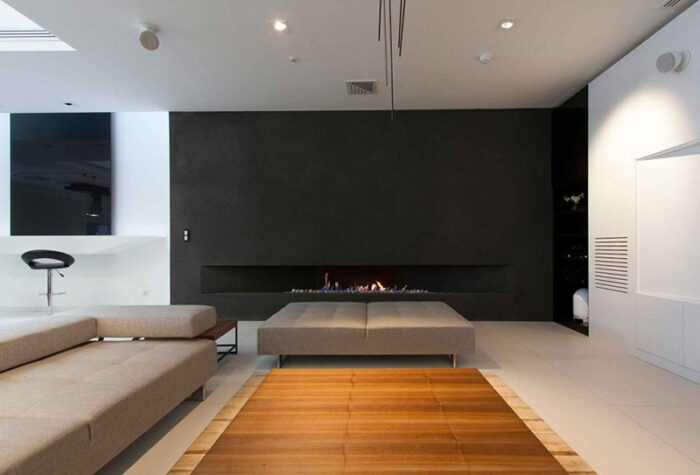
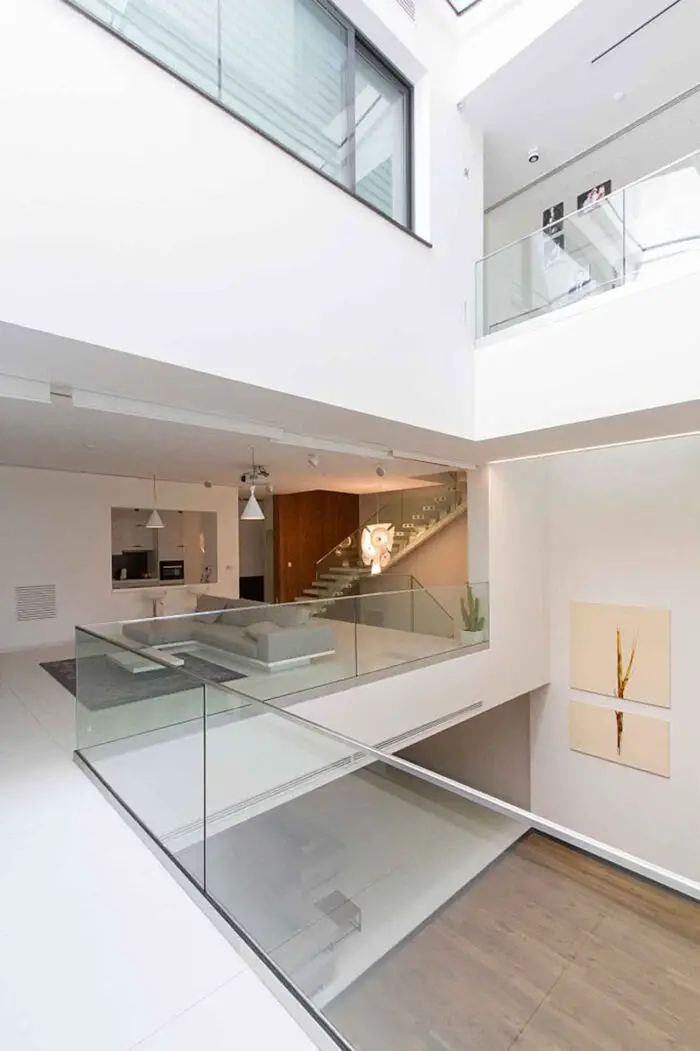
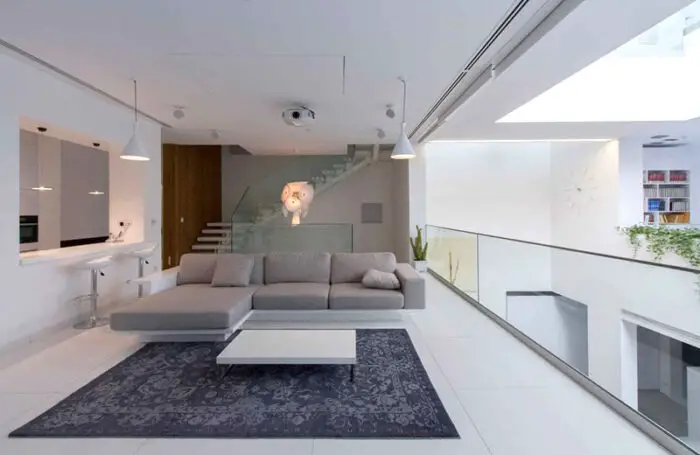
In summertime, Sharifi-ha House offers an open /transparent /perforated volume with wide, large terraces. In contrast, during Tehran’s cold, snowy winters the volume closes itself, offering minimal openings in total absence of those wide summer terraces. In this project, the challenges to the concepts of open/closed typology (introverted/extroverted character) led to an exciting spatial transformation of an ever-changing residential building.
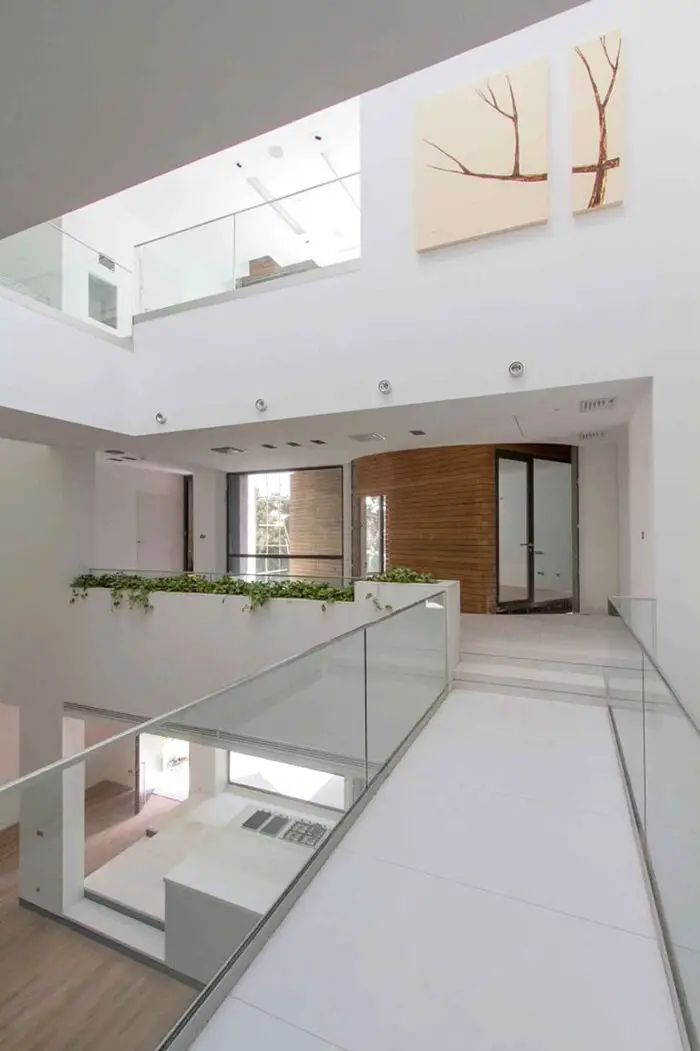
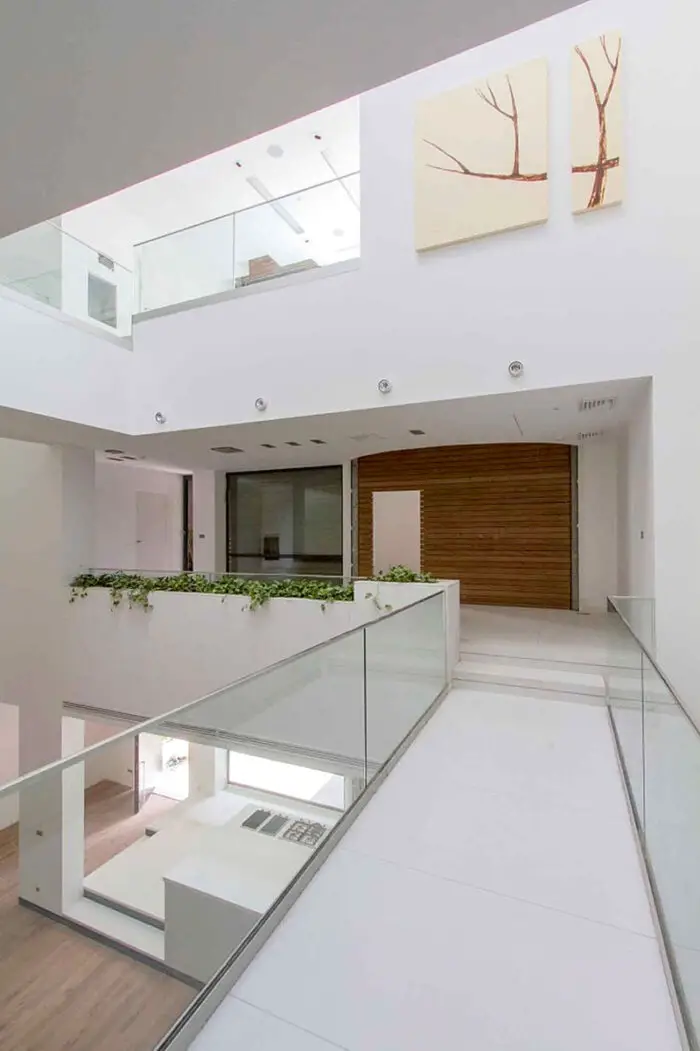
The House is distributed over seven floors: the two basement floors are allocated to family conviviality, fitness facilities, and wellness areas, while the ground floor hosts parking and housekeeping rooms. Public activities all happen on the first and second floors, and the family’s private life takes place on the third and fourth floors.
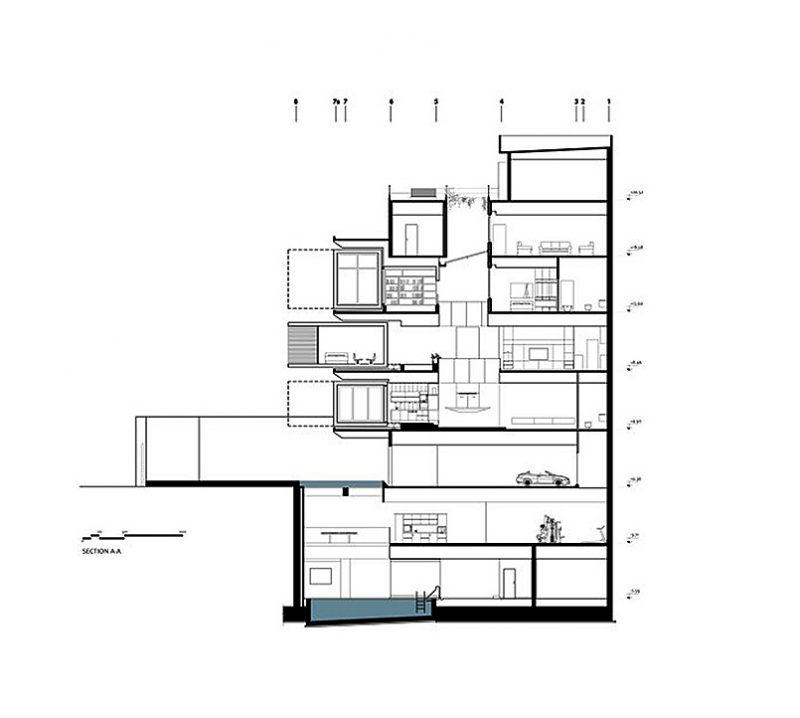
The project consisted of four major parts; the fixed volume of the structure, the void, and the fixed volume and the mobile volume, respectively. When the turning boxes are closed, the building captures sunlight throughout the space of the central void, which also connects the two fixed volumes by suspended bridges.
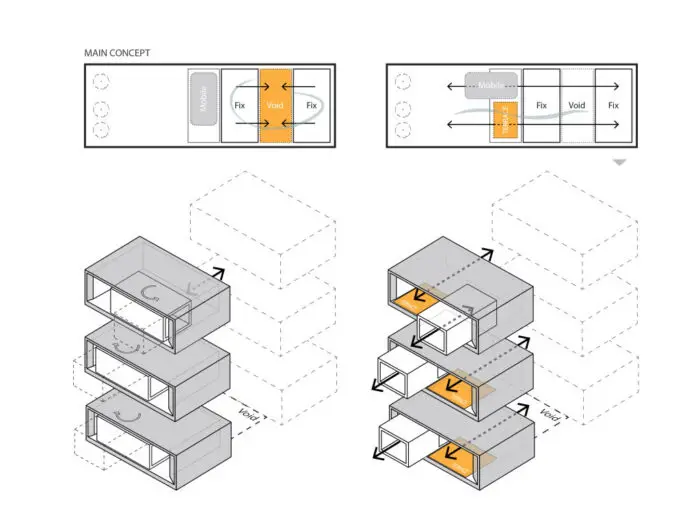
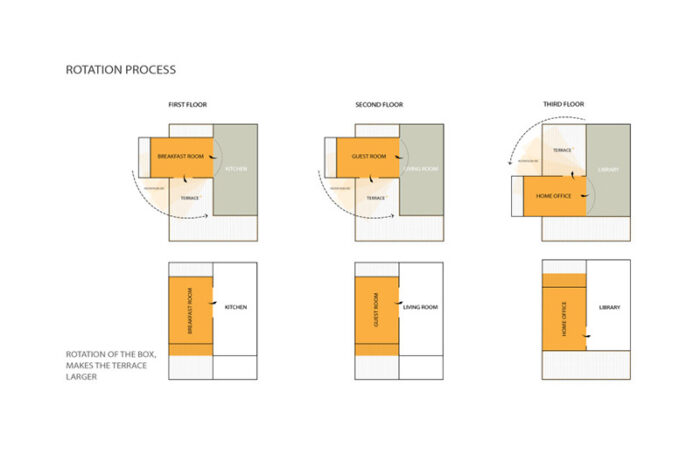
The house adapts to the functional needs of its residents. For instance, depending on whether there is a guest or not, the guest room (located on the second floor) can be reconfigured for different purposes. Similarly, home office and breakfast room (turning rooms on the first and third floors) can change the formality of their appearance according to their residents’ desire. In other words, there is always the possibility of having different seasonal or lighting scenarios, some of which have been already considered in the BMS program of the project.
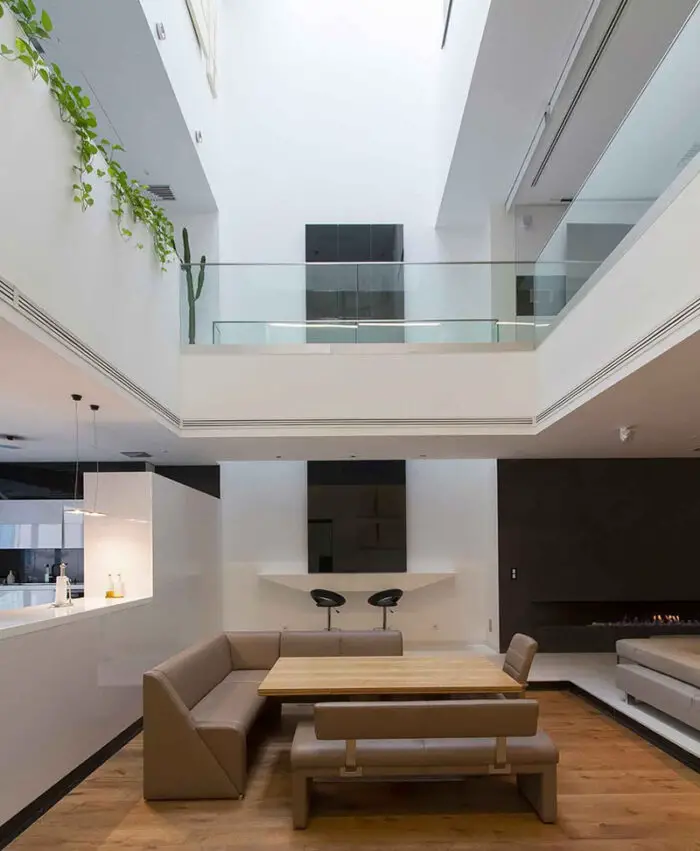
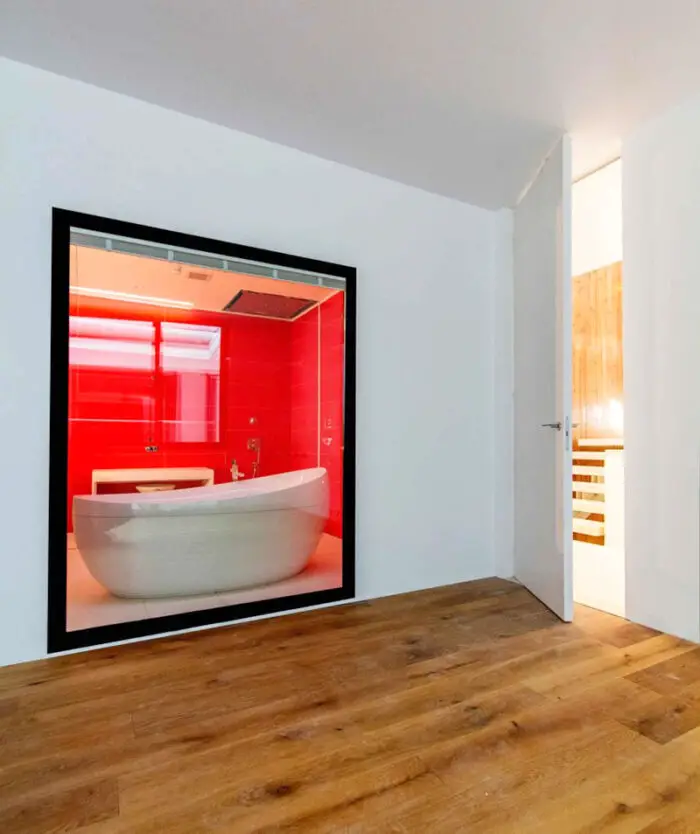
From the initial design steps, we noticed that three pine trees outside could be incorporated into the spaces of the interior. Now, in the open mode of the house, the trees are pleasantly captured by the window frames.
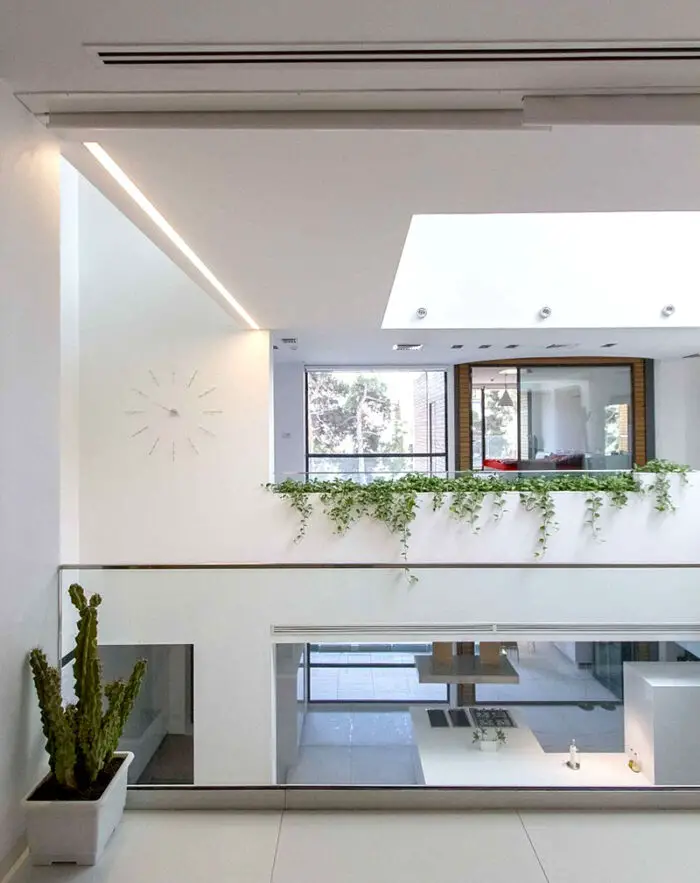
Stepping back for about three meters from the permitted construction boundary line allowed us to provide splendid daylight for the basement floors by inserting a glass fountain.
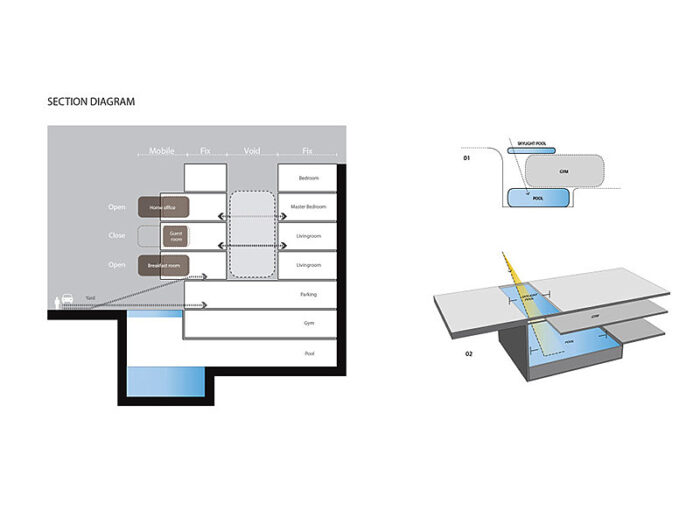
The fitness and wellness areas are accommodated between this fountain and the basement pool where reflective installations reverberate the water’s radiance all over the space.
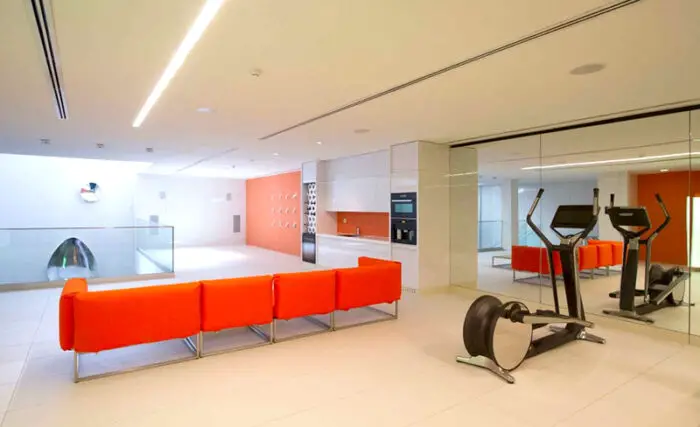

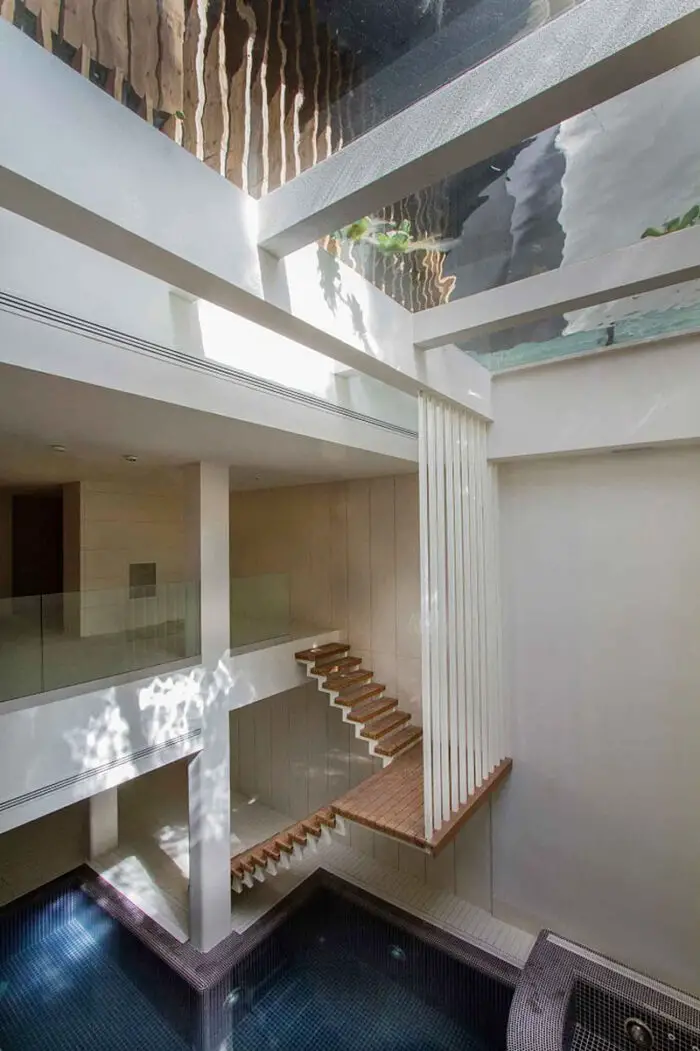
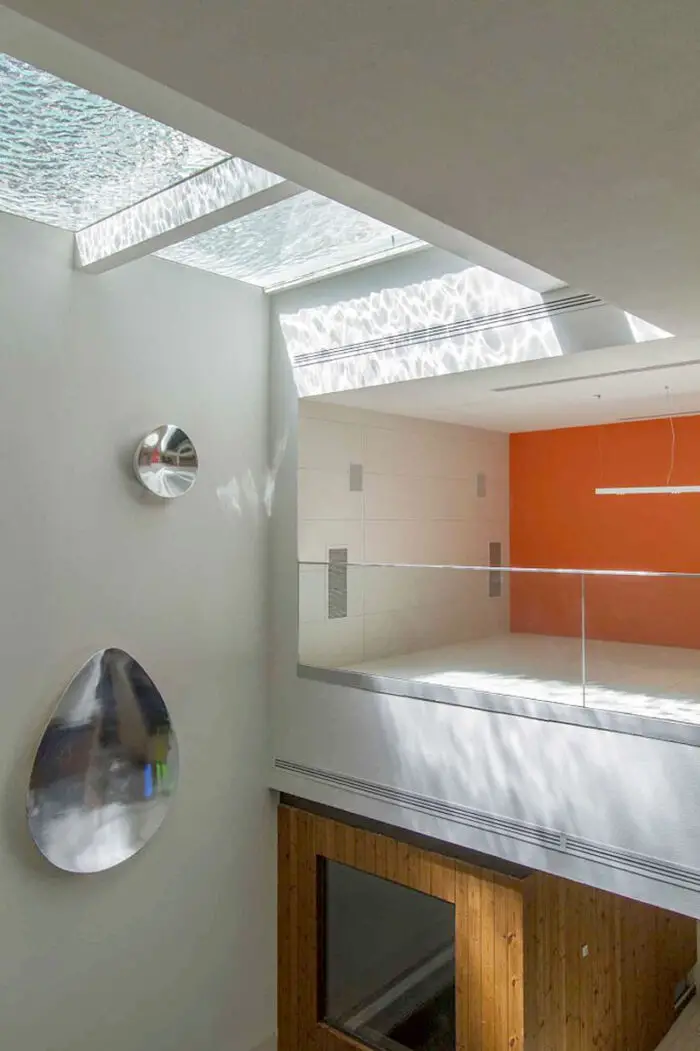
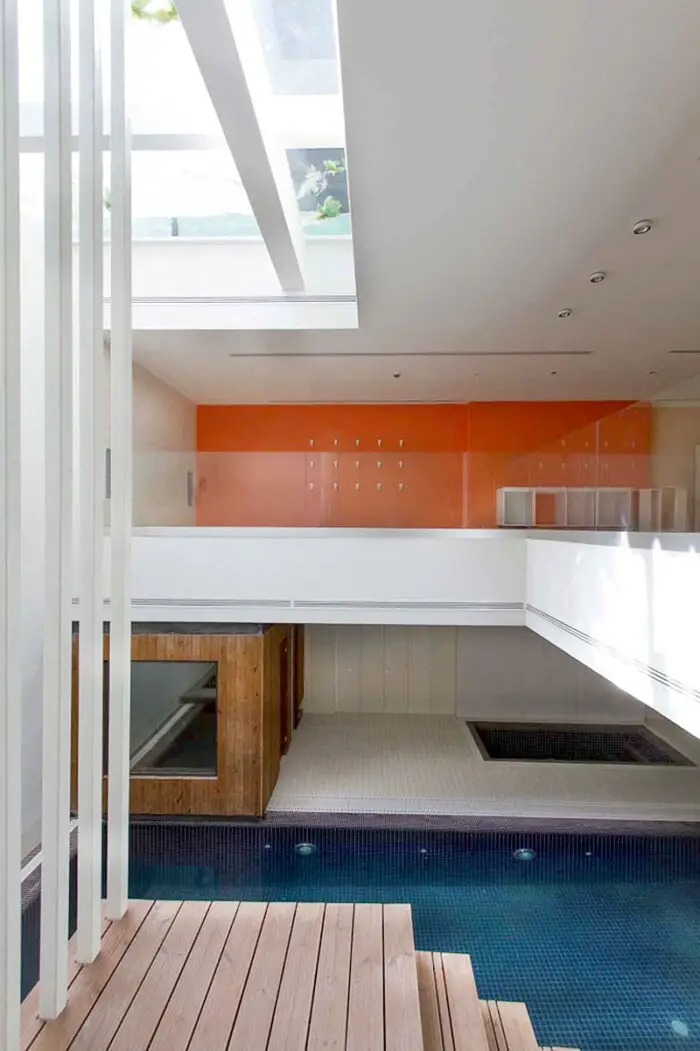
The applied manufacturing technique for the turning mechanism was in fact a simple one; the same method which is currently employed in turning theatrical scenes, turning the floor of car exhibitions, steel companies and the shipping industry in Iran. But as our client himself was into importing CNC and other similar industrial German machines, he preferred the structural system to be fabricated in Germany. In doing so, he could engage his employees in the manufacturing process and thus train them for future maintenance purposes.
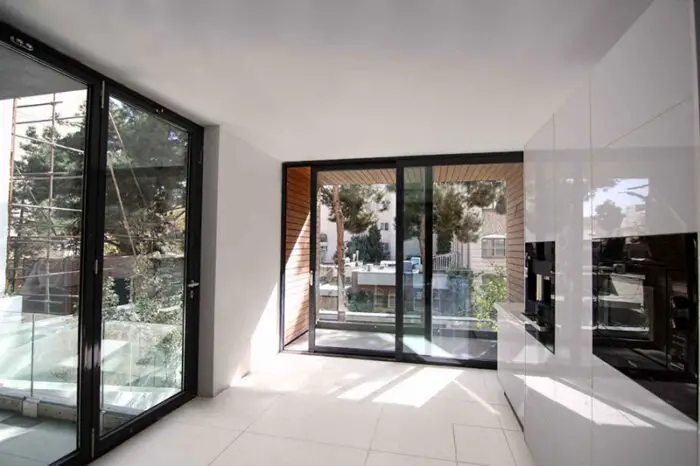
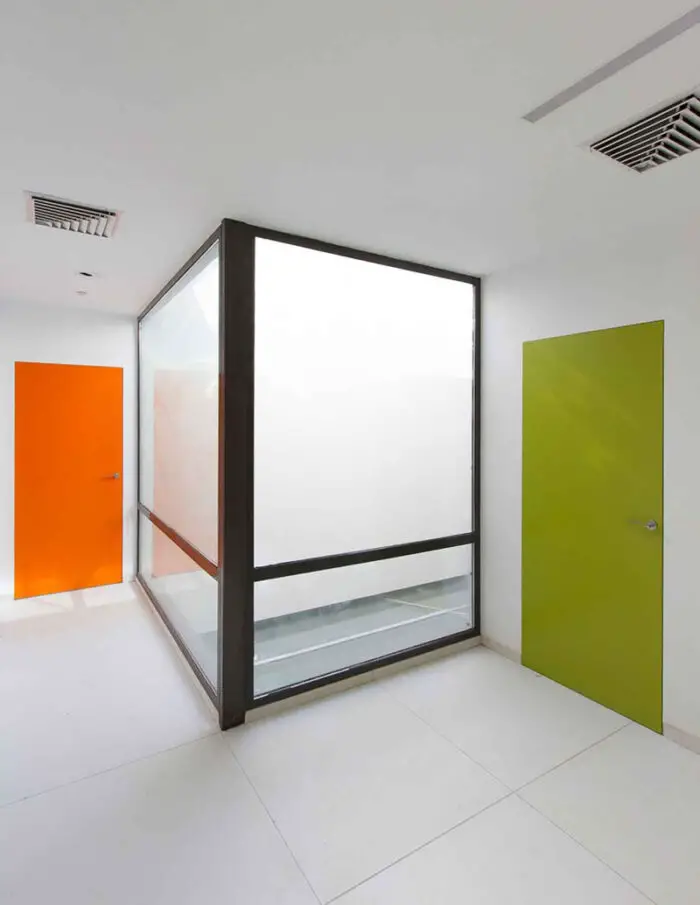
Details of the handrails and air-penetration controlling methods were major issues considered in developing the design of the turning boxes. Designing foldable handrails and refining the edges of the boxes happened to be our feasible solutions.
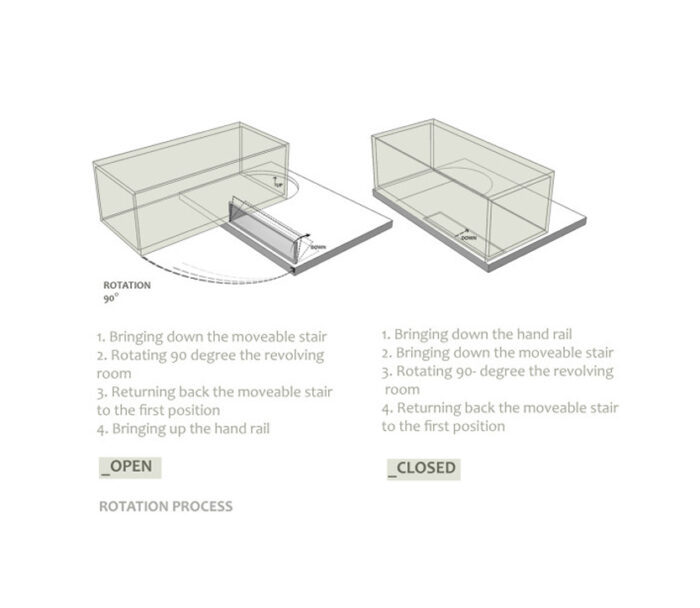
Considering the specialties of this kind of architecture, the structural system was inevitably a customized one. After digitally modeling the structure, a series of SAP2000 analysis were undertaken to examine static/dynamic performance of the proposed system. Being partially moveable is the dominant feature of this structural assembly, which was contemplated throughout the fabrication process by the German manufacturer company. The main loads all rest on the beams of the living rooms.
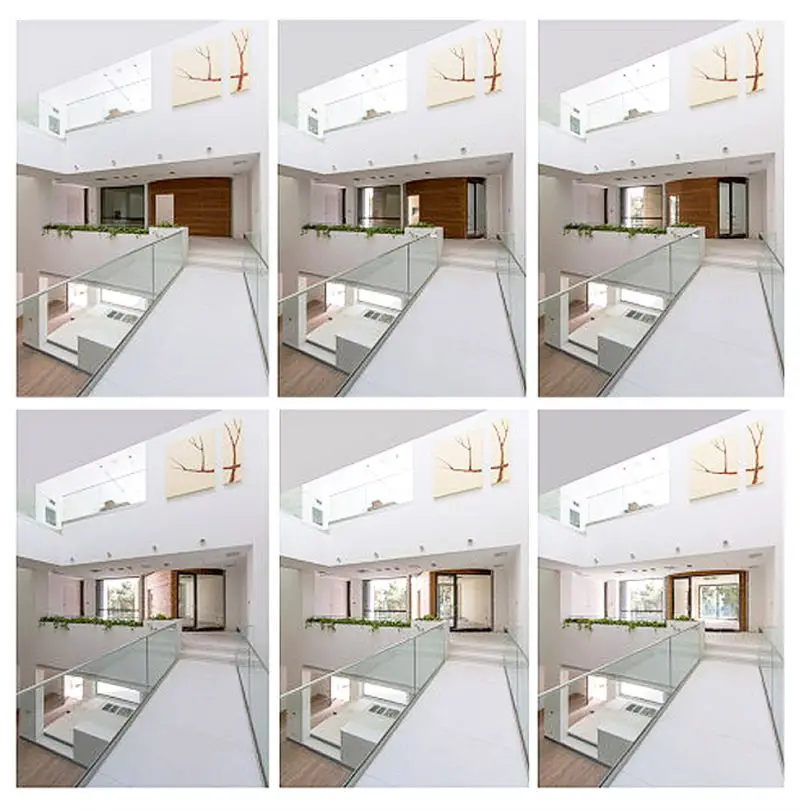
Due to the various configurations the turning boxes may take, the loading calculation has been estimated based on the largest possible loading value applied to the system. Additionally, in order to prevent structural deformation controlling the probable vibrations in the turning boxes was taken into account during the design/calculations of the structure.
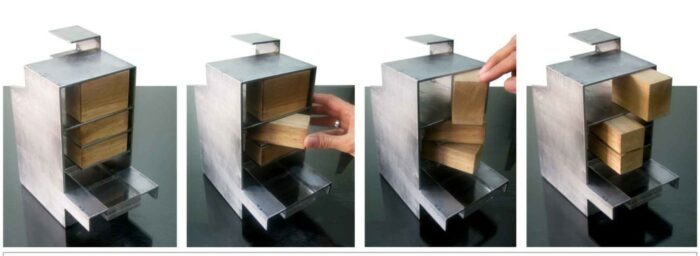
Architectural plans / Basement and first three floors, both open and closed:
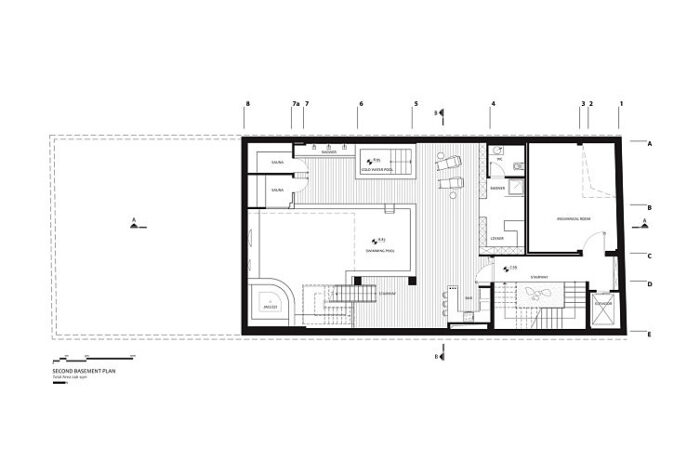
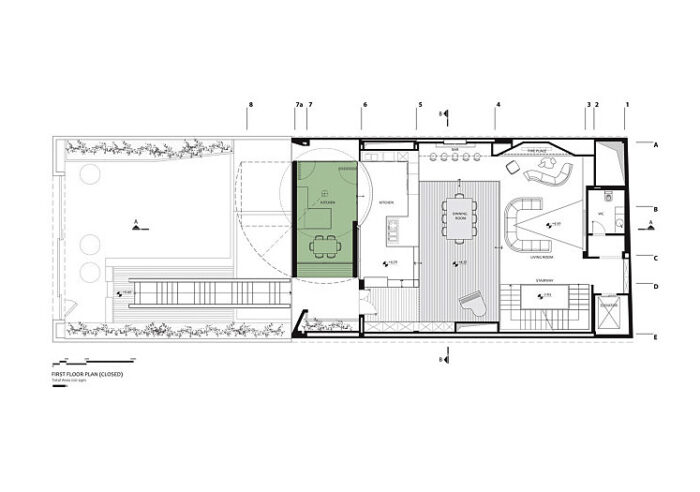
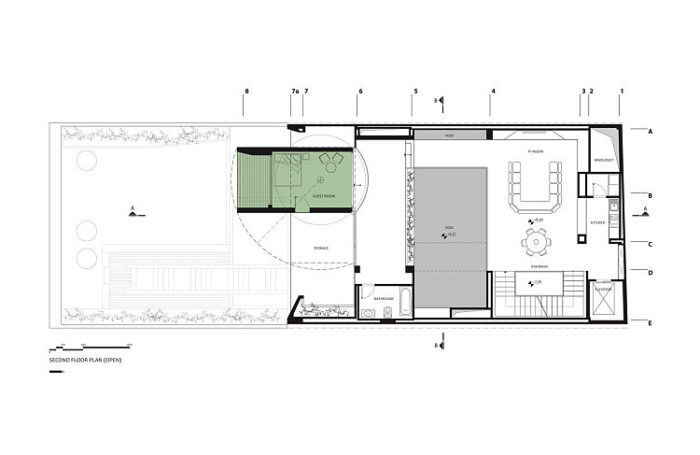
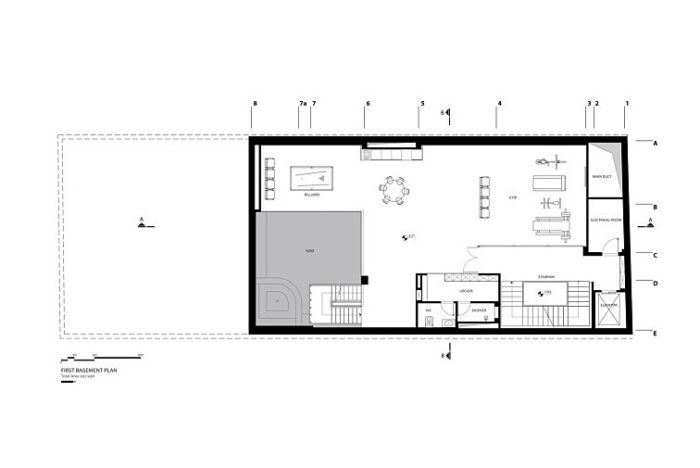
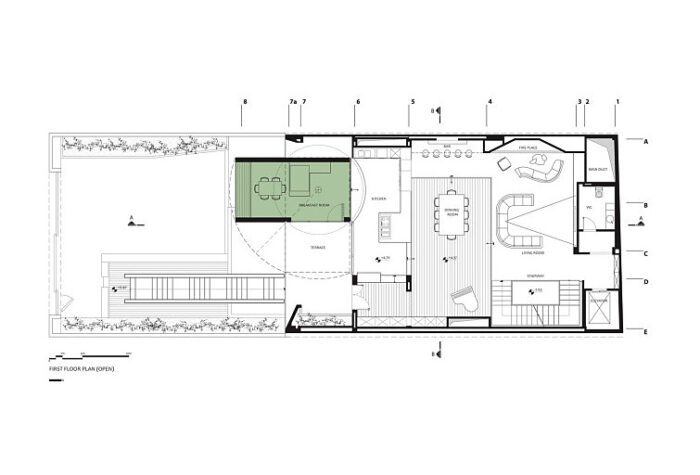
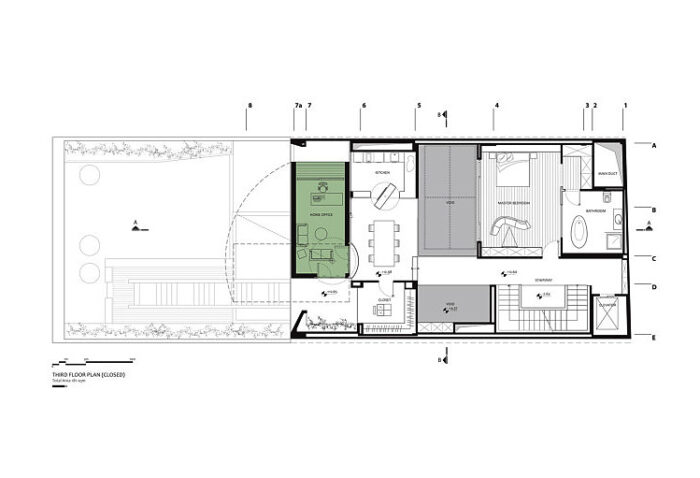
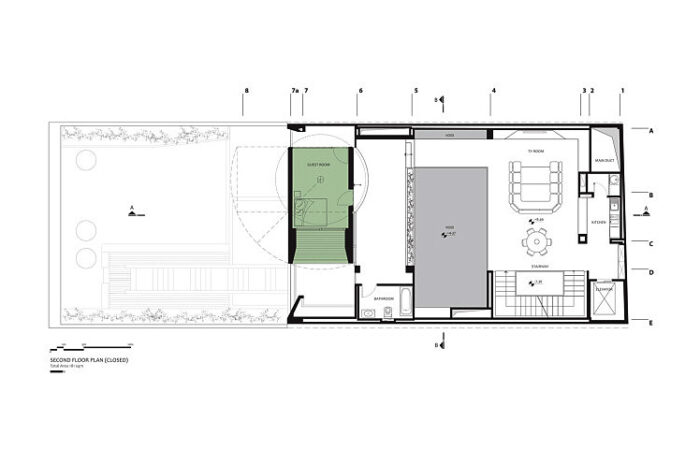
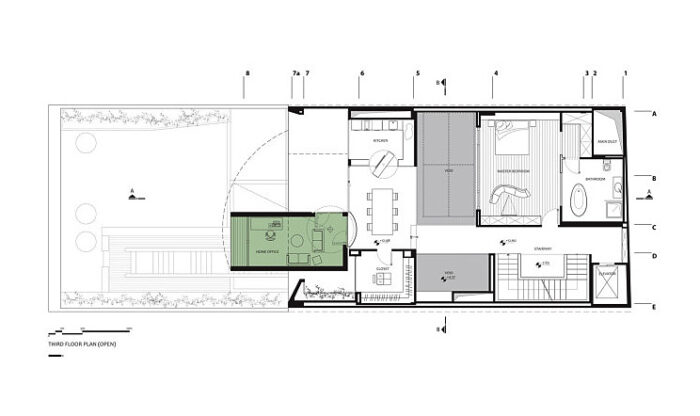
The house was titled Sharifi-ha House, in honor of traditional Iranian mansions.
Client: Mojgan Zare Nayeri, Farshad Sharifi Nikabadi
Location: Tehran, Iran
Type: Residential Buildings
Status: Completed
Scale: Large
Team: Alireza Taghaboni, Rouholah Rasouli, Farideh AghaMohammadi, Shahnaz Goharbakhsh, Mojtaba Moradi, Negar Rahnamazadeh, Asal Karami, Majid Jahangiri, Masoud Saghi, Hossein Naghavi, Fatemeh Tabatabaeian, Iman Jalilvand
Detailing Design Associates: Hamid Mohammadi, Amir Taleshi
Supervision: Alireza Taghaboni, Shahnaz Goharbakhsh
Construction: Imen Sazeh Fadak Co.
Landscape Consultant: Babak Sadri, Omid Abbass Fardi
Structural Design: S. Fallahi
Mechanical Consultant: Hoofar Esmaeili
Electrical Consultant: Mohammad Torkamani
Revolving Rooms System: Bumat Company
Photographers: Parham Taghioff, Salar Motahari, Majid Jahangiri, Mandana Mansoori
About Next Office
Alireza Taghaboni, a practicing architect since 2004, founded Next Office in 2009. Taghaboni is also a painter and holds a PHD degree in Architecture. A frequent contributor to Iranian architecture and urbanism magazines and periodicals, he is a tutor and partner at the Center for Contemporary Architecture, a private institution in Tehran that offers an alternative architectural education program.
Next Office, based in Tehran, aims to provide a contemporary alternative to traditional Iranian architecture, responding to the climate conditions, economic, socio political and cultural context of each project. The practice’s work ranges from single-family houses to residential, commercial and mixed-use large-scale complexes, to urban master plans. Over the past decade, the practice has won several Memar Awards, a prestigious national award for architecture in Iran held annually, making it one of the top prize-winning practices in the country.
Sharifi-ha house, with its rotating rooms adapts to a shifting lifestyle, and demonstrates a critical take on building regulations and zoning by-laws. The project was shortlisted at the World Architecture Festival in 2014 and has been acknowledged internationally in professional media and also by the public.
Next Office
all images courtesy of the architect
